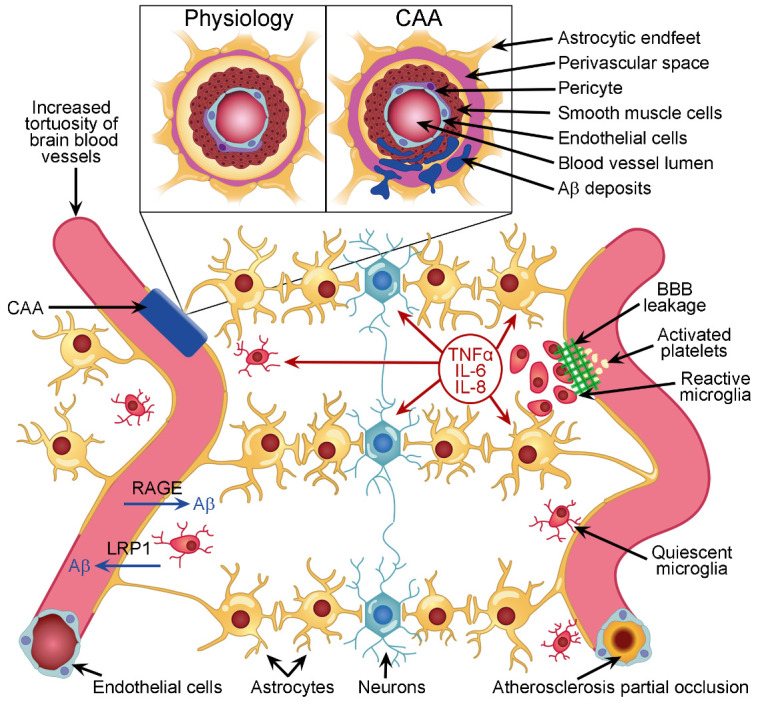Figure 2.

Illustration of some pathophysiological changes that could affect neurovascular units and induce chronic CNS neuronal stress, ultimately initiating AD and its associated neuropathologies. During aging and disease, blood vessels in the brain become more tortuous. This affects the laminar blood flow in the vessels and may provoke the local activation of platelets and/or formation of atherosclerosis. In case of high blood Aβ levels, RAGE receptors are capable of transporting Aβ into the brain parenchyma. Conversely, LRP1 receptors can remove Aβ out of the brain. Both blood and brain Aβ could form multimers that accumulate in the wall of blood vessels to induce CAA (insert), which is often associated with increased perivascular space volume. When the BBB is leaking, some blood material may enter the brain parenchyma (right). The leak is sealed by the aggregation of platelets that initiate clotting. Meanwhile, microglia sense the blood material that has entered the brain parenchyma and initiate an immune response by releasing pro-inflammatory cytokines and chemokines in the milieu to communicate with surrounding cells. If several of these conditions become chronic and overlap over time, then they may initiate permanent neuronal stress leading to the onset of AD.
